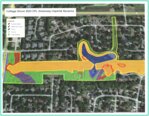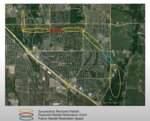Open space. It’s something that can be hard to find if you’re an animal in the Twin Cities biome.
Luckily for birds, bees, and other wildlife, the Cottage Grove Parks and Recreation …
This item is available in full to subscribers.
To continue reading, you will need to either log in, using the login form, below, or purchase a new subscription.
If you are a current print subscriber, you can set up a free website account and connect your subscription to it by clicking here.
Otherwise, click here to view your options for subscribing.
Please log in to continue |


Open space. It’s something that can be hard to find if you’re an animal in the Twin Cities biome.
Luckily for birds, bees, and other wildlife, the Cottage Grove Parks and Recreation Commission along with the city is considering grant funded work off Hinton Avenue as part of a native habitat belt, stretching in an arc from down by Ravine Park and extending north and west across the north side of the city. Much of the work is already done, with two areas left, the current project area and one further east.
The grant would be a ten percent match, while the site under consideration at the May 8 meeting is just under 21 acres and located off Hinton Avenue in a power line corridor, with plans for habitat restoration to include forestry mow, native turf lawn, a pond, prairie, and “tree editing,” the last used in reference to removing non-native species, lest they take over. Public Works Director Zac Dockter spoke at the meeting meant to give residents a chance to voice their thoughts on the proposed restoration.
“So we’ve been working on this project since 2003 to develop that corridor into two things,” Dockter told the Parks Commission. “One is recreational trails—the whole thing is actually paved trail, and then also to restore the habitat to create that nature ecosystem throughout the whole corridor.
Currently classified as Classification E under the Public Open Space Management program, the city mows the area around once a year. Restoration work would move the area to Classification C, meaning that it would be moderately manicured” with a focus on native planting and design elements. Dry areas would be planted with a native prairie mix while natural water lines would have a native wetland mix. Mowing would only be used “as necessary” to benefit the native plants. Prescribed burns would also be potentially used to maintain the area.
As to tree editing, it involves two herbicide applications and/or a burn, following by seeding with the no till method and landscape restoration over a period of years. Dockter said the city would try to avoid clear cutting
“So a lot of homeowners are concerned about losing the forest behind their home,” he said. “That’s pretty rare that we’ll do that.” The aim of tree editing is to remove invasive species.
Long term benefits are landscape beautification, upholding native plant diversity, providing habitat for pollinators as well as living and breeding space for wildlife. Also included are water filtration (through the plants), soil stabilization, and reduced long-term maintenance requirements, including with tree removal weeds, and pond management.
The timeline of the proposed restoration project off Hinton Avenue is dependent on the grant award, with Fall 2024 the earliest the city would start to restore the property.
The Commission then took time to hear public comment, with two residents speaking and parks director Zac Dockter saying he would go and visit each address to work with and preserve the investments of homeowners adjoining the proposed site.
“No guarantee,” Dockter said of the habitat restoration grant. “But if we don’t get it we’ll continue to reapply.”
The board later approved a letter of support for the grant application, next moving on to the appointment of a liaison to the committee on historic preservation.